Lahaina Noon will occur this year starting on Saturday, May 14, 2022, with the second round of occurrences set to end on July 27, 2022. Yes, it’s hard to believe that it’s already nearly summer in Hawaii! Lahaina Noon is the solar phenomenon that was named in a contest sponsored by the Bishop Museum. It occurs when the Hawaii sun is directly overhead, and, being at a 90 degree angle, casts no shadow.
Lahaina Noon travels through the islands from south to north, starting Saturday on the Big Island. This only happens in the tropics as the sun doesn’t pass directly overhead in other parts of the world. Only those places located between the Tropic of Cancer and Tropic of Capricorn experience this effect when there’s overhead sun both before and following the summer solstice.
We’re covering the dates and times in today’s post and also giving you tips on sun protection while you watch this yearly tropical solar phenomenon.
Hawaii stands alone in the U.S. as having this special event. It replaces the summer solstice, when the sun’s rays are most direct, and occurs both before and following the start of summer. Additionally, Lahaina Noon serves as a reminder of just how strong the Hawaii sun really is at our location south of the Tropic of Cancer. The word Lahaina translates from the Hawaiian language to mean cruel sun. Another ancient Hawaiian name for the event was Kau ka lā i ka lolo, a hoʻi ke aka i ke kino,” a phrase meaning high noon.
Hawaii is the only place in the United States to experience the sun’s direct rays, also known as subsolar point, since it’s the only state in the tropics.
During Lā Hainā (the old name for Lahaina) Noon, solar noon, or local noon, any vertical object (think telephone poles, for example) won’t have a shadow cast. This is because the further south you are in Hawaii, the earlier and the later Lahaina Noon occurs each year. We’ve enjoyed Lahaina noon at one of the most popular spots, Honolulu Hale’s Sky Gate sculpture.
Lāhainā noon in Hawaiʻi 2022 Dates and Times
Here are the dates and times when you’ll find the Hawaii sun directly overhead:
☼ Haleiwa Oahu May 28, 12:30PM and July 14, 12:38PM
☼ Hana Maui May 23, 12:21PM and July 19, 12:30PM
☼ Hilo Hawaii May 18, 12:17PM and July 24, 12:27PM
☼ Honolulu Oahu May 26, 12:29PM and July 16, 12:38PM
☼ Kahului Maui May 24, 12:23PM and July 18, 12:32PM
☼ Kailua-Kona Hawaii May 17, 12:20PM and July 24, 12:31PM
☼ Kaunakakai Molokai May 25, 12:25PM and July 17, 12:34PM
☼ Lahaina Maui May 24, 12:24PM and July 18, 12:33PM
☼ Lanai City Lanai May 24, 12:25PM and July 18, 12:34PM
☼ Lihue Kauai May 30, 12:35PM and July 11, 12:43PM
☼ South Point May 14, 12:19PM and July 27, 12:29PM
☼ Waimea Hawaii May 19, 12:19PM and July 22, 12:29PM
Sun warning: 10 tips for Hawaii vacations


While it’s obvious just how strong the sun is here in Hawaii, you’d be surprised how many visitors we see who look painfully burned to a crisp.
Enough sun can make your Hawaii vacation rock. But too much sun can simply ruin your vacation. Doctors say that even a single severe burn can double one’s melanoma risk. And Hawaii’s beaches put you more at risk, since the sand reflects 25% of solar rays.
1. Sunscreen hasn’t been proven effective in preventing skin cancer. Covering up is the only thing that works. But, we know, who wants to do that. See tips #4 and #6.
2. Zinc or titanium oxide-based sunscreens are still considered safest and most effective in preventing sunburn. Read our recent article: Hawaiian Sunscreen | Health and Safety Updates. It also includes information about Hawaii’s new sunscreen law, which is now in effect.
3. Choose safe sunscreens applied at two-hour intervals, and more frequently when in the water.
4. Be alert to excessive sun exposure from 10:00AM until 3:00PM.
5. Don’t forget to apply sun protection to easily burned ears and lips.
6. Wear a hat and sunglasses.
7. Don’t use old sunscreen that’s been sitting around for years.
8. Help protect Hawaii’s precious coral. Chemical barrier (vs. physical barrier) sunscreen can damage Hawaii’s reef system.
9. Drink more water during periods of sun exposure.
10. Research sunscreens for effectiveness and safety.
Photo at Hilton Hawaiian Village, Waikiki..
Updated 5/14/22
Get Breaking Hawaii Travel News

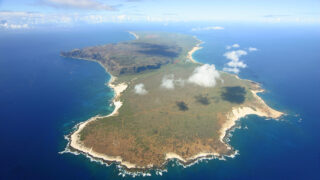

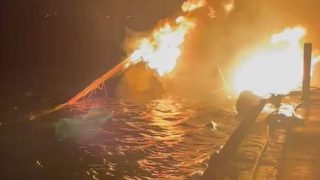
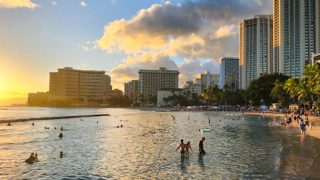
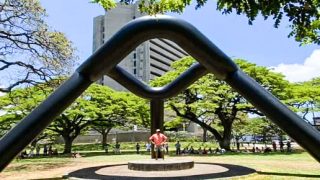
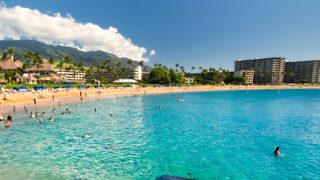
Bless the folks in Maui who survived the fires , we were just there for a week a week ago and so happy we got to see the beautiful island before it was destroyed
Great info. I loved the ancient Hawaiian name for the meaning of high noon. Kau ka lā i ka lolo, a hoʻi ke aka i ke kino.
This sun is beautiful with blue sky and palm trees 🌞🌴🥰🥰❤💙
Great article. That warning about sunscreen not having protection is an absolute truth, my dermatologist can vouch for that. Also, high altitude sun exposure can be uglier than Hawaii by a long shot.
Aloha Guys
Hi Roy.
Thanks. How was your stay on the island?
Aloha.
As always we loved it.
This occurrence always amazes me. I look forward to it every year! Thank you for publishing the information so I don’t miss it!
Hi KL.
Thanks. Enjoy! We appreciate your comments.
Aloha.
Great article!
Good info. Thank you.
Dang – missing is by a week! Hope all is well with you two!
Hi Barbara.
Thanks. Good to hear from you! Regards.
Aloha.
Mahalo and Good Knowledge shared, a hui Hou. We’re somewhere between 80-84 trips to Hawaii since ’86, looking forward to this year after ’20-’21 postponements and cancellations. Honolulu May 26th is still possible!
Hi Randy.
Thanks. We appreciate your more than 70 comments. Happy travels!
Aloha.
Sooo, slather on the Maui Babe and take advantage of the rays? Got it🔥👍🏼🤣. Would be cool to be there for this but we usually come in early October.
Justin
Mahalo for such an informative article! I’m particularly interested in eye protection. What brands of sunglasses, and lens types, are recommended?
Hi James.
Thanks. That’s a good area to pursue, which we haven’t done thus far. If you do, please share it.
Aloha.
Usually Maui Jim’s were always recommended but don’t know if technology has improved over that.
Thanks for all the great info!
Thanks for reporting on this much under-appreciated issue. Lasting skin- and eye-damage is one of those things that nobody really wants to talk about, but it is huge for those of us who live in the tropics. Many of us here in Hawai’i have friends or neighbors who are repeatedly undergoing traumatic surgery and chemotherapy for different types of melanoma, often on the mainland, or whose sight is permanently damaged by careless cummulative eye exposure to everyday sunlight from just everyday releated driving around in the mid day sun. I really had no idea about this untit lasting damage happened to me at a relatively young age, but UV rays permanently damage all parts of your eye. Even wearing good sunglasses is often not enough, since the sun in the tropics gets scattered by all the tiny droplets of moisture in our humid air and harmful rays can easily get into your eyes even if you don’t directly stare into the sunlight. Or, through the fringes of your sunglasses, as they reflect off the road or the ocean or from the road in front of you. It absolutely pays to be very mindful — I find the best advice is not to go out between 9am and 4:30pm. Just my 2 cents.
Good advice! We’re from Arizona and know the dangers of the sun. Coppertone puts out an SPF 50 lip sunscreen. A lip sunburn is painful and dangerous to your health.
A question: We are in Maui now. Just drove Hana Highway. We’ve noticed lots of abandoned and burned out cars along the roadway… and not just on Hana. Any reason?
Hi Susan.
We heard that the highway there has become a dumping ground for abandoned vehicles. Not sure what if anything the county is doing about that, and we’re sorry to hear from you that it is still going on.
Aloha.
I just left Maui and saw several long abandoned and/or burned cars on the way to Lahaina, to Hana, and several other places on the island. This wasn’t happening the last time I was there; I hope the county government is planning address it. Very creepy seeing them.